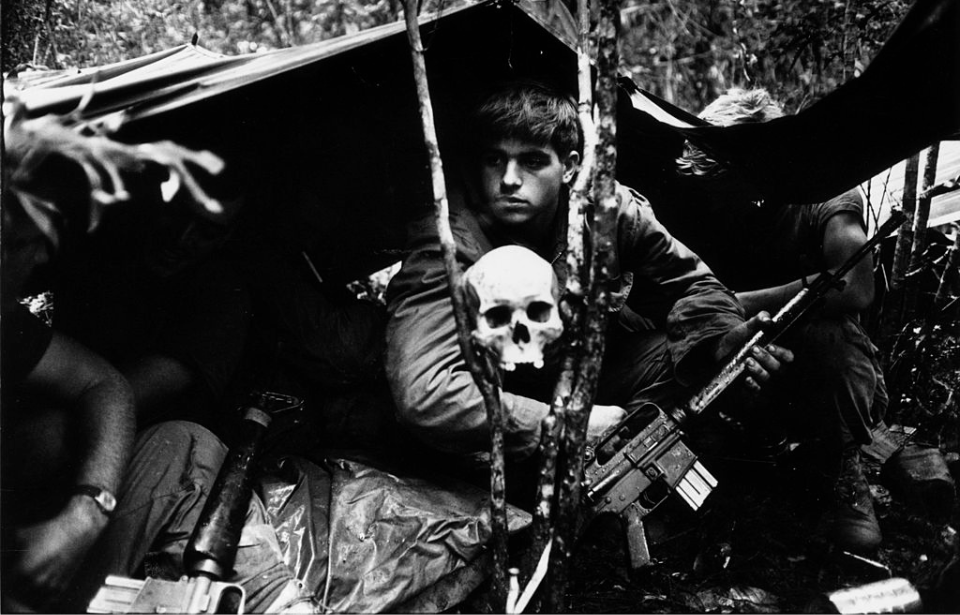Above is an American soldier encamped during a tour of Vietnam, sitting with his rifle in-hand while a human skull keeps watch. Award-winning British photojournalist Terry Fincher captured this iconic image – one of his most famous – on October 25, 1968. Fincher served five tours of Vietnam, covering the war for the Daily Express, despite the physical and mental exhaustion that came with the job.
It might seem strange to see a human skull displayed so brazenly in Fincher’s Vietnam-era photo, but this was far from atypical during the war. There were, in fact, many images captured during the conflict that show an American soldier with a human skull displayed on or near his tent. Another famous one was taken by Specialist 5 Richard Durrance. It shows an infantryman from the 1st Battalion, 12th Infantry Regiment, 2nd Brigade, 4th Infantry Division with a skull on his tent.
Why was this such a common sight? The meaning behind the human skulls photographed by Fincher and Durrance are difficult to know, but there are several theories. One is that the skulls served as a way of instilling courage and simultaneously intimidating one’s enemy. A collector of morbid war relics in the United States has a photo in his collection of GIs posing with an altar made of human bones. He said, “They’re showing the Angel of Death that they’re not afraid.”
Another interpretation, however, is that the skulls were a form of morbid souvenir. It’s no secret that some soldiers tried to bring home those they’d collected while serving in Vietnam. Skulls like the one in the photo above were sometimes turned into trophies, as well as candle holders and ashtrays. Some were covered in graffiti, with sayings like “today’s pigs are tomorrow’s bacon” or “stay high stay alive” scrawled on them.
More from us: The Freelance Photographer With the Amazing Mustache Who Survived Enemy Fire In Vietnam
Although this behavior may seem odd, it was something that was common enough in the years before Vietnam. American soldiers took human skulls during the Philippine-American War in the early 1900s, and even collected those belonging to the Japanese in World War II.
